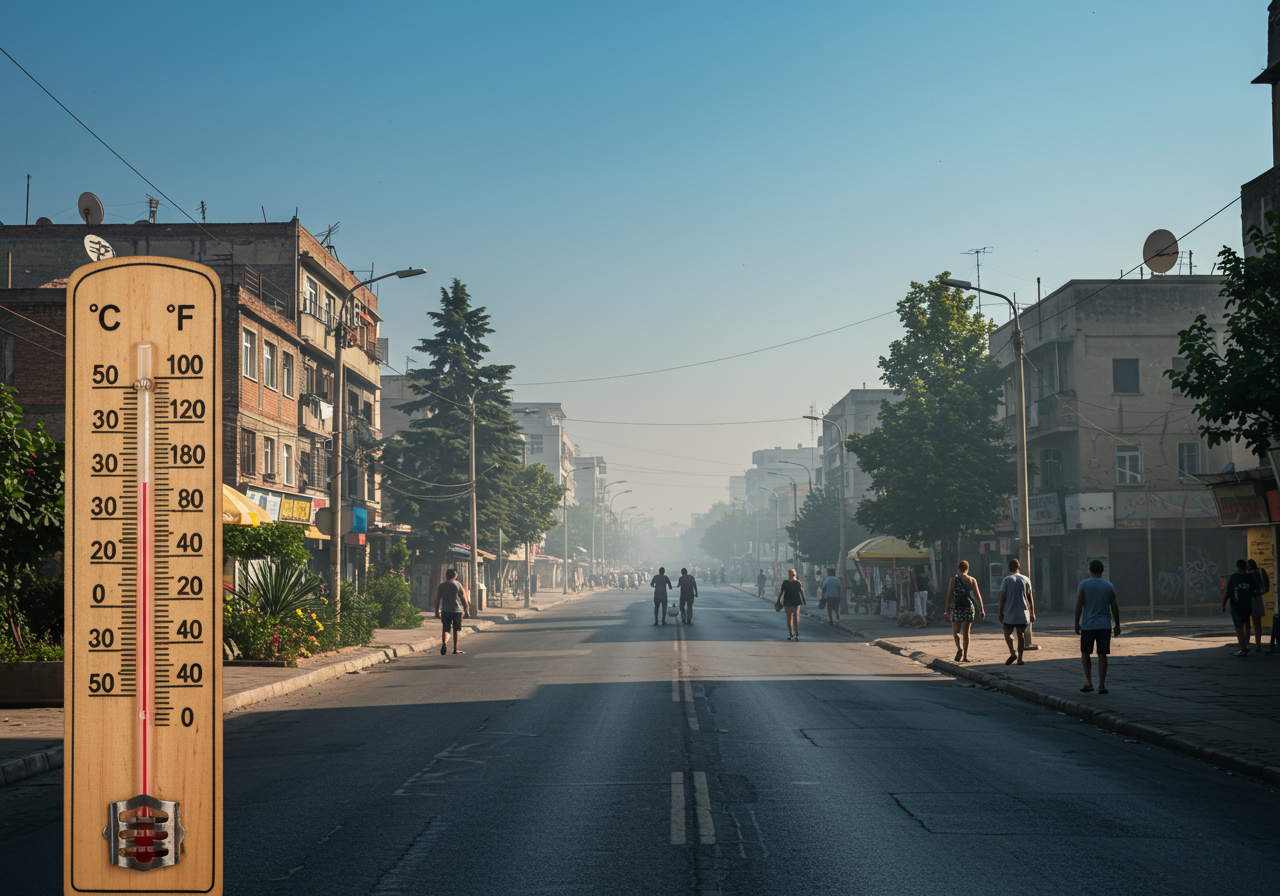By Kristina Vankova
The prolonged heatwave gripping large parts of Europe is expected to continue unabated, raising concerns across the agricultural and environmental sectors. Forecasts suggest that this sweltering weather pattern, characterized by unusually high temperatures and a severe lack of rainfall, will persist until the latter part of July, providing only slight moments of respite to beleaguered regions.
The Czech Republic, among other European nations, is currently experiencing unprecedented weather conditions that have significant implications for both urban and rural communities. As the mercury rises, authorities and residents alike are grappling with the challenges posed by this extreme heat.
Record-Breaking Temperatures and Ongoing Droughts
Europe is no stranger to summer heat, but the ongoing conditions have set new records. Several regions reported temperatures soaring well above 30掳C (86掳F), with some areas even pushing past 40掳C (104掳F). Meteorologists attribute this intense heat to a persistent high-pressure system, which is trapping hot air over the continent.
Simultaneously, vast stretches of land are suffering from drought conditions. The combination of high temperatures and insufficient rainfall has led to parched landscapes, affecting everything from agricultural yields to water supply systems. The scarcity of water is a growing concern, with rivers and reservoirs reaching alarmingly low levels, prompting authorities to issue warnings and implement conservation measures.
Impact on Agriculture and Food Production
Agriculture, a vital component of the Czech economy, faces severe challenges under these conditions. Farmers are reporting stunted growth of crops such as wheat, corn, and barley, which are typically resilient to dry conditions. However, the current situation is not typical, and even these hardy staples are showing signs of stress.
The lack of rainfall and extreme temperatures have resulted in insufficient soil moisture, a critical factor for plant health and productivity. Livestock farmers are also feeling the pressure as pasture lands dry up and water for animals becomes scarce. The ripple effects of these conditions could lead to lower yields and higher food prices, affecting both local and international markets.
Efforts are underway to support the agricultural sector, with government and community initiatives focusing on resource conservation and providing aid to struggling farmers. However, these measures may not fully offset the imminent losses if the drought and heat persist.
Urban Challenges and Health Concerns
In urban areas, the heatwave exacerbates issues such as heat-related illnesses and increased energy consumption. Cities are dealing with a spike in cases of heat exhaustion and heatstroke, particularly among vulnerable populations, including the elderly and those with pre-existing health conditions.
Public health officials are urging residents to remain vigilant, emphasizing the importance of staying hydrated and avoiding outdoor activities during peak temperature times. Cities are also implementing cooling centers and distributing resources to help residents cope with the heat.
The demand for electricity has surged as people rely heavily on air conditioning to cool their homes and workplaces. This increased consumption strains power grids and raises concerns about potential blackouts during peak usage periods.
Environmental Consequences and Long-Term Implications
Beyond immediate human and economic impacts, the current weather patterns are having a profound effect on the environment. The prolonged dry conditions increase the risk of wildfires, which could devastate natural habitats and threaten biodiversity. Europe has already witnessed several significant fires this season, with emergency services stretched thin in their response efforts.
The sustained heatwave also raises questions about long-term climate trends and the future of weather patterns in the region. Experts point to the increasing frequency and intensity of such events as evidence of broader climate change, urging policymakers to consider adaptive strategies for resilience against similar occurrences in the future.
Anticipating Relief and Future Outlook
While the forecast suggests that relief may come in the latter half of July, uncertainty remains regarding the extent and duration of this respite. Weather models indicate a potential shift in the atmospheric patterns that could introduce cooler temperatures and a return of precipitation. However, the timing and intensity of these changes are yet to be fully understood.
In the meantime, preparation and adaptation are key. Local governments and communities are advised to continue implementing strategies to mitigate the effects of the heatwave and prepare for possible future occurrences. This includes investing in infrastructure that can withstand extreme weather and developing comprehensive emergency response plans.
As Europe endures this relentless heat, the shared experiences highlight the need for cooperative approaches to addressing climate-related challenges. By uniting efforts across borders, countries can better equip themselves to prevent and mitigate the impacts of similar events in the future.
The persistent heatwave serves as a stark reminder of nature鈥檚 power and the importance of sustainable practices. As citizens, policymakers, and scientists work towards solutions, the hope is to emerge more resilient and prepared for whatever climate challenges lie ahead. For now, the focus remains on navigating the current crisis and anticipating the changes that late July might bring.
